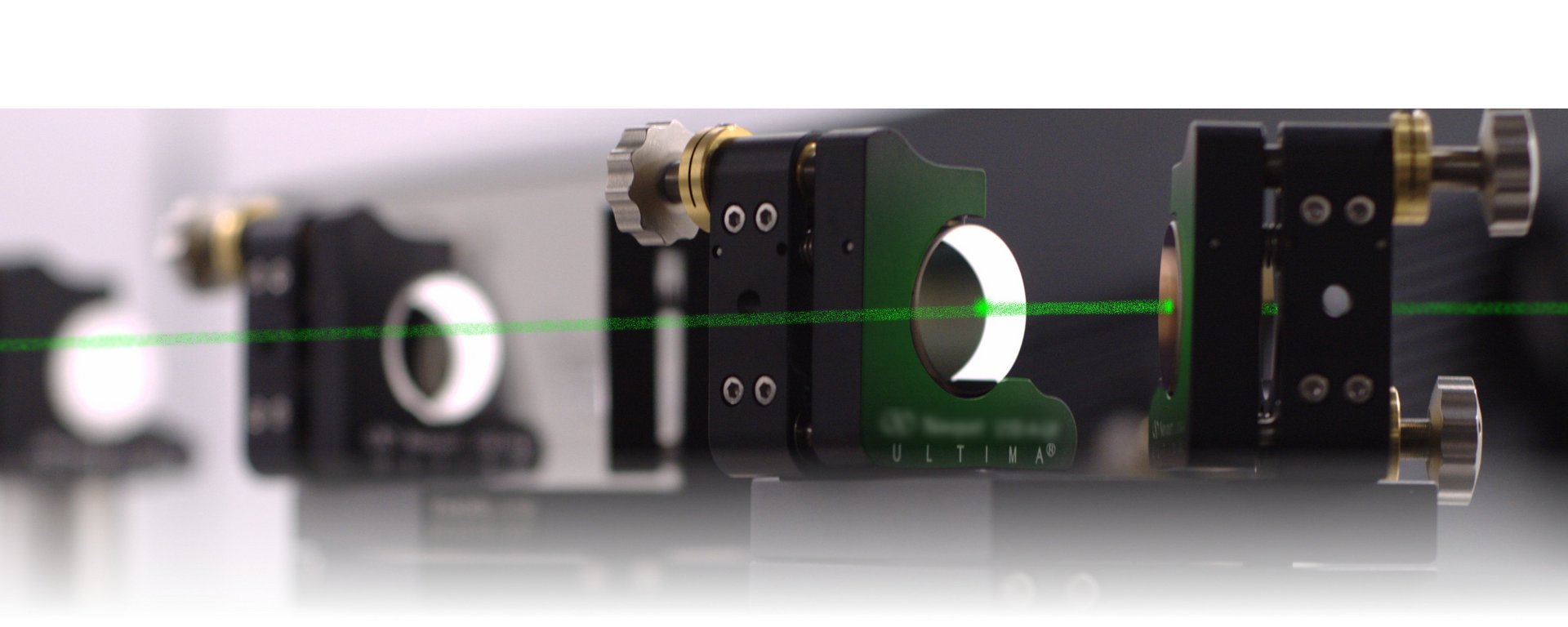THz Applications
The search for THz applications is a field of ongoing research especially since the invention of ultrashort pulse laser systems in the end of the 1980. The big potential for new systems and applications is mostly attributed to the following characteristics of THz radiation:
- Low energy: In contrast to x-rays the radiation between 100GHz and 10THz is non-ionizing and therefore not harmful to humans and / or material. But this comes at a price as the background radiation at room temperature is in the same energy range and gives a high noise level.
- Many optically opaque materials are transparent for THz radiation: Paper, cardwork, cloth and plastics are mostly materials which are transparent in the THz regime. This gives huge opportunities to implement systems for quality control and security applications. However there is no mass market for those systems up to now.
- High absorption in water: Boon and bane of the THz radiation. The high absorption of water makes very sensitive humidity measurements possible (e.g. test for skin cancer) but is a big challenge for data transmission at high frequencies. The humidity in the air restricts data transmission to narrow communication bands and / or to short distances.
- Spectral fingerprints: Many molecules exhibit characteristic absorption lines in the frequency range above 1THz. This enables the identification of many unknown substances like explosives or pharmaceuticals.

Figure 1: Possible application in quality control: At 300GHz the structures inside of the pen-tablet are clearly visible.
Up to now the killer application for THz radiation has not been found. One reason for this is the high investment cost for a THz system. Nonetheless there is a big discussion about possible areas of operation:
- Medicine: Especially during the nineties of the last century the application of THz for medical examination was discussed. The biggest problem here is the high water absorption confining the application to the upper skin layers. Although the identification of skin cancer is possible with such a system the costs are too high compared to the treatment by a experienced physician
- Security: There are two main areas for security applications: The spectroscopic investigation of postal envelopes and packages to find illegal / explosive substances, and the identification of hidden objects under clothes. In the former case the acquisition rate is the biggest challenge while several layers of clothes are a big challenge in the latter one.
- Quality control: The in-line quality control of plastic tubes is an established application nowadays. More thickness measuring applications for optically opaque materials are under development. Multilayer coatings can be measured even during the drying process.
- Pharmaceuticals: The online observation of the coating process of pharmaceuticals is one application which is done with THz systems even nowadays. Furthermore Raman-spectroscopy is a widely used technique working with frequencies in the THz range. But here the measurement takes place indirectly in the optical region enabling the use of very cost-effective elements.
- Communication: The increase of data rates brings the need for higher modulation frequencies into the range of several 100GHz. Unfortunately the water absorption in the atmosphere attenuates the signal quite drastically. Furthermore the transmission needs a line of sight which makes advanced techniques necessary for indoor communications.

Figure 2: photo und THz transmissions-picture of two samles. Left: 'F' from copperfoil as test object. Right: histological liver sample (ca. 40x50mm). Cancerous tissue is white in the photo and blue in the THz picture.
All in all its a fast moving area which has fight qith high prices for system components. Additionally for many applications there are established alternatives which might give inferior but mostly satisfying results. Our approach to use semiconductor based devices might introduce the necessary step in cost reduction to bring the THz systems into the mass applications.
Colleagues:
